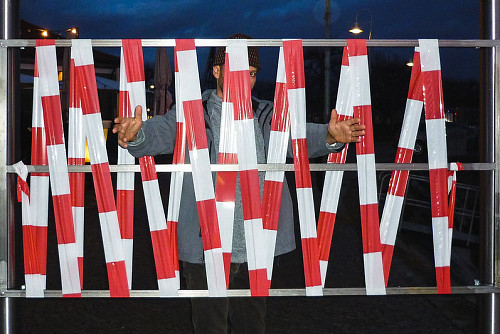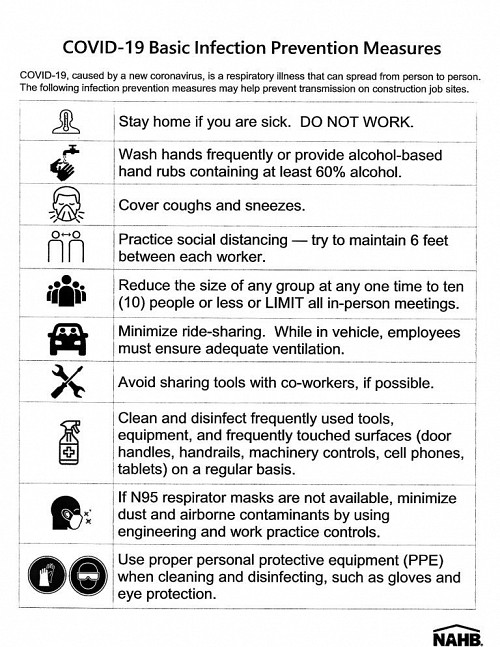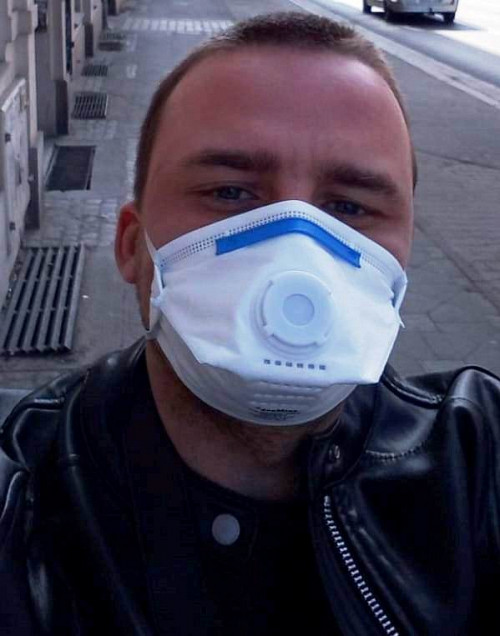Home Improvement: Dangerous In The Time Of Coronavirus?
 In the COVID-19 pandemic, our simplest daily activities can feel scary, especially anything outside the home and immediate family circle. However, life goes on and many homeowners need – or choose – to hire a professional for work in the house.
In the COVID-19 pandemic, our simplest daily activities can feel scary, especially anything outside the home and immediate family circle. However, life goes on and many homeowners need – or choose – to hire a professional for work in the house.
But is home improvement dangerous in the time of coronavirus?
The answer is that most activities come with an increased risk right now. However, here's the good news: there are practical ways to minimize the risk, both in general and specifically in the field of home improvement and repair.
Please read this... and stay safe:
The Greatest Risk Factor for Coronavirus & How To Protect Yourself
- Risk Factor – How Coronavirus Spreads
Coronavirus spreads via droplets from an infected person’s nose or mouth. These can affect anyone within a range of about 6 feet of the patient, causing the disease called COVID-19. Close physical proximity is the greatest risk factor for coronavirus.
Droplets may also be spread to surfaces -- for example, if the infected individual wipes their nose and then touches a door handle. The virus could survive on objects for several days, unless they are disinfected.
- Protect Yourself By Social Distancing & Sanitization
Social distancing. More accurately “physical distancing,” social distancing is vital. It means putting a literal distance between yourself and others, who might be infected with coronavirus (yes, it’s possible to carry the virus without apparent symptoms).
Any physical contact with a potential carrier, like handshakes and hugs, is out of the question. So are standing, walking, or sitting closer than 6 feet away.
Hand washing. The best way to sanitize hands is washing frequently and thoroughly, with soap and water, for 20 seconds at a time. Use hand sanitizer if washing is impractical. Reputable contractors these days are carrying hand sanitizer in their vehicles and using it scrupulously.
Latex gloves and masks. Latex gloves also help protect against coronavirus transmission. If you are over 60 or immune-compromised, it's advisable to wear a mask when your contractor comes for a service call. Make sure you know how to use and dispose of your mask correctly.
Minimize Coronavirus Danger During Home Improvement & Repair
Verify contractors. The very nature of home improvement and repair means allowing contractors into your home. It’s always important to verify anyone you hire, of course, but right now it is vital.
Follow the rules. Abide by health directives issued by the government and your HOA or condo committee. Your state may have designated home improvement/repair as essential services, allowing pros to work even during lockdown. (Find state-by-state updates.) However, your community or building management might adopt policies of limiting visitors, including contractors, at this time.
Check hygiene standards. Make sure your contractor and their company follow Center for Disease Control best practices. All contractors must sanitize their hands and wear gloves in your home. Any employee who’s feeling ill must stay home. The Family First Coronavirus Response Act provides for sick leave to keep workers with COVID-19 safe in self-isolation until they recover.
Minimize contact. Keep your family out of the room where your contractor's working. Practice social distancing – stay at least 6 feet away. For large projects, carefully schedule pros like carpenters, drywallers, etc, to avoid overlap. You do not want a lot of people working in your home at one time -- and this also protects the workers.
Out-Of-The-Box Ideas For Home Improvement Safety
Home improvement professionals are just as concerned about limiting the spread of coronavirus as you. They're coming up with creative new non-contact ways of continuing to serve you in these times. Take a look at the following examples:
- Video conferencing. Home improvement is, by its very nature, hands-on work, but video conferences allow you to tackle an amazing number of preliminaries. Show a pro the exact location of a plumbing leak, say, so they can select the correct equipment and parts, and get right to work on arrival at your home. In another scenario, you could demonstrate the space available for a furnace replacement... and even that tricky angle they have to negotiate on your basement stairs!
- Remote estimates. Home improvement professionals are streamlining the estimate process via video, phone, and text in order to provide you with remote cost estimates. And if you're squeezed for funds, ask about the possibility of contractor financing.
- Screen sharing. When you need to go over home improvement designs with a remodeling contractor or landscaper, screen sharing makes it simple for you to review the plans and measurements.
- Messaging. It's quick and easy to send photos of your project or repair to your contractor by WhatsApp, SMS, or email. A picture really is worth 1,000 words.
- Samples sent to you. With visits to supplier showrooms difficult or impossible in your area, have samples of tile, flooring, and other materials sent directly to your home. You’ll be able to make your selection safely and comfortably.
- Ultimate social distancing. For big jobs like kitchen renovation, contractors can partition off a work site inside your home. This ensures social distancing, as there will be an actual physical barrier between you, allowing your family to go about their daily activities without fear of contact.
How Pros Are Fighting the Spread of COVID-19
The Construction Industry Safety Coalition (CISC) has developed detailed recommendations for workers and employers in the building trade. These incorporate CDC best practices, adding industry-specific guidelines, such as:
- Allow only necessary personnel admittance to job sites
- Social distance on the job and minimize ride sharing to the site
- Disinfect the site often and dispose safely of garbage and debris
- Avoid sharing tools and equipment
- Divide crews on major projects in two, so work can continue even if one group needs to self-quarantine
Pros are also finding ways to minimize airborne dust onsite. This reduces the need for masks, which are urgently required by healthcare workers.
Laura Firszt writes for networx.com.
Looking for a Pro? Call us (866) 441-6648

Plumbing Average Costs
Plumbers Experiences

The Right Landscaper Can Change A Yard From Terrible To Terrific

Tree Removal And Backyard Cleanup Make A New House Feel Like Home








